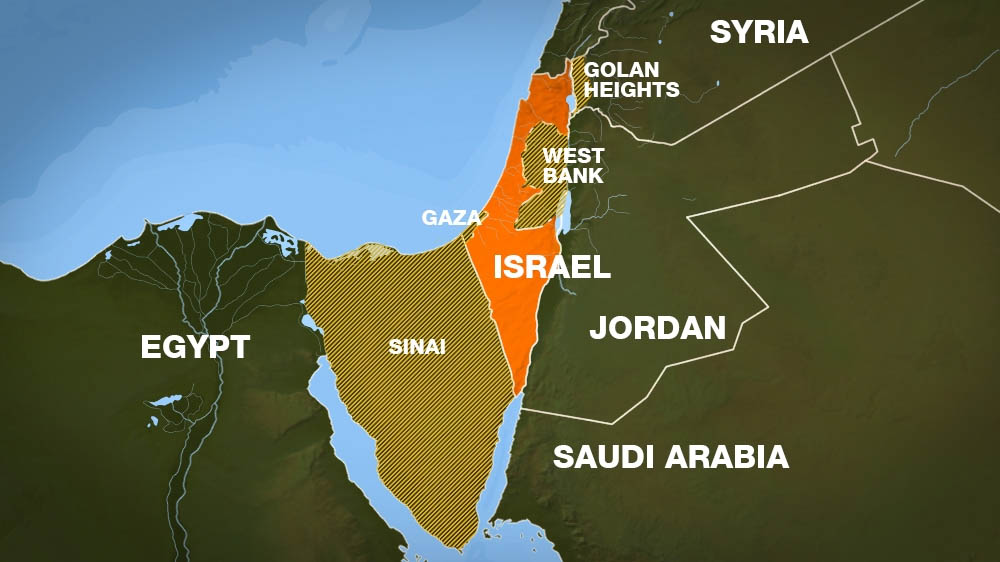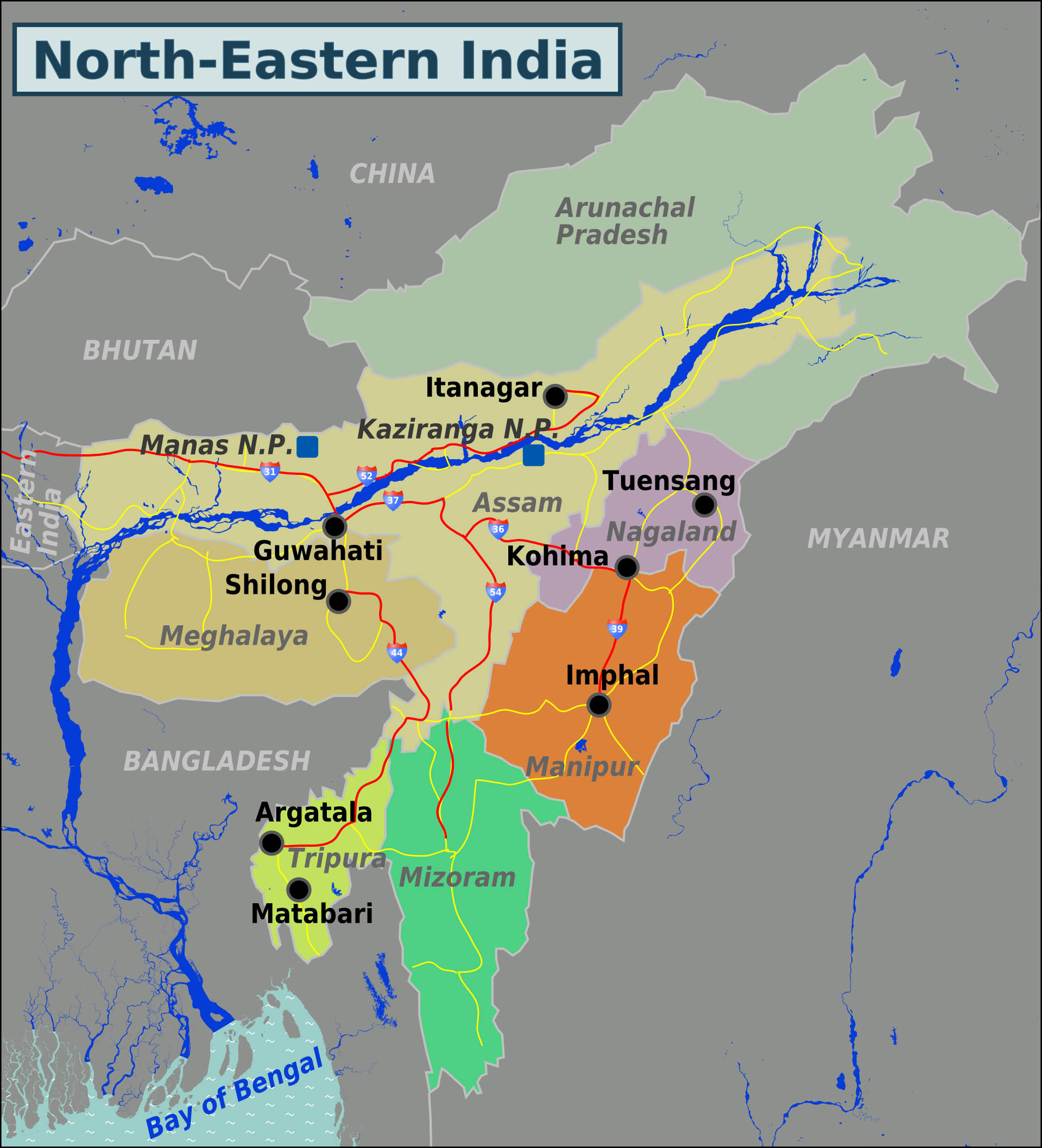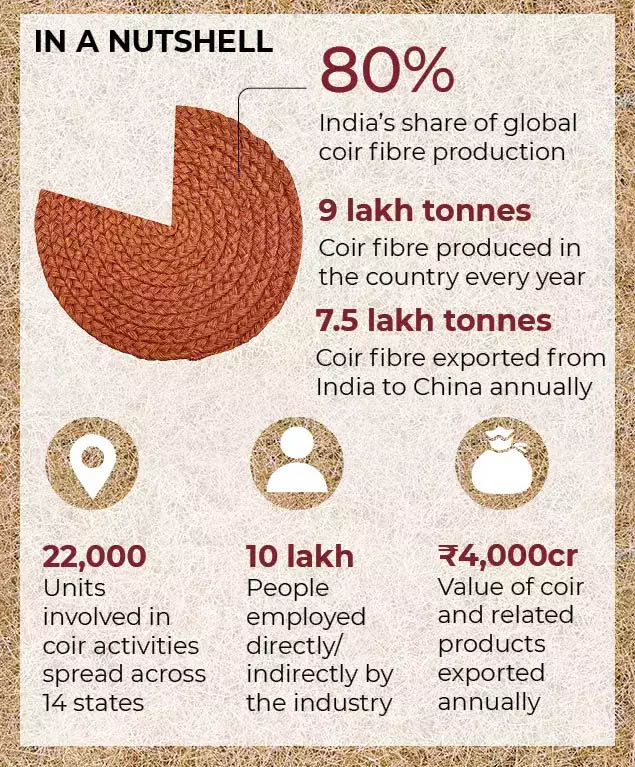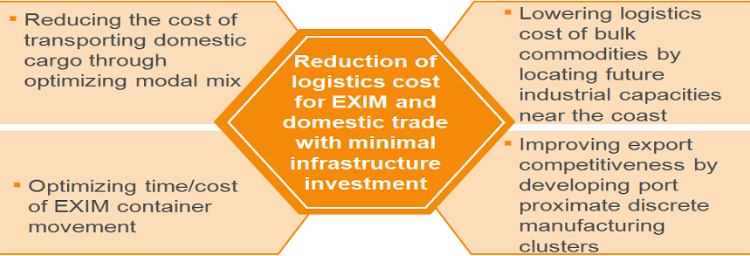International Relations
West Bank Settlements: Israel
For Prelims: Sinai Peninsula, Gaza Strip, the West Bank and East Jerusalem, Golan Heights
For Mains: Arab-Israeli War (1948), Arab-Israeli conflict
Why in News?
Recently, the Israel's Supreme Court has rejected a petition against the eviction of more than 1,000 Palestinian inhabitants of a rural part of the occupied West Bank in an area which Israel has designated for military exercises.
- Recently, tensions flared up again at Jerusalem’s al-Aqsa Mosque between the Palestinians and Israeli police.
What was the Judgement?
- The judgment has paved the way for the demolition of eight small villages in a rocky, arid area near Hebron known to Palestinians as Masafer Yatta and to Israelis as the South Hebron Hills.
- Masafer Yatta residents and Israeli rights groups say that many of the Palestinian families have been permanently residing in the 3,000 hectares area since before Israel captured the West Bank, in the 1967 Six-Day War.
What is West Bank?
- West Bank is a landlocked territory in West Asia. It also contains a significant section of the western Dead Sea.
- It was captured by Jordan after the Arab-Israeli War (1948) but Israel snatched it back during the Six-Day War of 1967 and has occupied it ever since.
- The West Bank is sandwiched between Israel and Jordan.
- One of its major cities is Ramallah, the de facto administrative capital of Palestine.
- At present, there are around 130 formal Israeli settlements along with 26 lakh Palestinians at West Bank.
- Masafer Yatta is in the 60% of the territory where the Palestinian Authority is prohibited from operating.
- The Palestinians want the West Bank to form the main part of their future state.
What was the Six-Day War 1967?
- The Six-Day War was a brief, but bloody conflict fought in June 1967 between Israel and the Arab states of Egypt, Syria and Jordan.
- Israel seized the Sinai Peninsula and the Gaza Strip from Egypt, the West Bank and East Jerusalem from Jordan, and the Golan Heights from Syria.
- Since 1967, the lands Israel seized in the Six-Day War have been at the center of efforts to end the Arab-Israeli conflict.
- Even though Israel returned the Sinai Peninsula to Egypt in 1982 and withdrew from Gaza in 2005, the status of the Golan Heights and the West Bank continues to be a stumbling block in Arab-Israeli peace negotiations.
UPSC Civil Services Examination Previous Year Questions (PYQs)
Q. The area known as ‘Golan Heights’ sometimes appears in the news in the context of the events related to (2015)
(a) Central Asia
(b) Middle East
(c) South-East Asia
(d) Central Africa
Ans: (b)


Governance
Inter-State Arrests
For Prelims: Code of Criminal Procedure, Seventh Schedule of the Indian Constitution, Article 22(2) of the Constitution of India
For Mains: Inter-State Arrests, Police Reforms, Various Security Forces & Agencies & Their Mandate, Judgements & Cases
Why in News?
Recently, an arrest of a politician by Punjab Police precipitated a crisis after the Delhi Police registered a case of kidnapping against the Punjab Police team.
- The raging row over the arrest has sparked off a debate over police jurisdiction and inter-state police cooperation.
- The ramifications of such a politically driven process are nothing but a challenge to fairness and equality. Rather than becoming a topic of justice, the matter turns into the topic of political rivalry.
What is the Procedure for Making Inter-State Arrests?
- Entry 2, List II of the Seventh Schedule of the Indian Constitution puts ‘Police’ in the State list, implying that all matters relating to police will be adjudicated upon by the state government.
- Broadly, the intent of the law has been that a criminal in a particular state must be arrested by the police of that state.
- However, in certain circumstances the law does allow the police of one state to arrest an accused in another state.
- This may be done by the execution of a warrant issued by a competent court, or even without a warrant — in which case the concerned state police must inform the local police about the arrest.
- State police forces across the country regularly make arrests in other states. In the normal course, this is done with the assistance of the local police.
- In many cases, however, the local police are merely informed before or after the arrest.
What does the Law say on Inter-state Arrests?
- Section 79 of the Code of Criminal Procedure (CrPC) deals with inter-state arrests based on warrants issued by competent courts.
- This section lays down detailed procedures for such arrests. However, the powers of the police to arrest an accused in another state have not been defined clearly as far as arresting without a warrant is concerned.
- Section 48 of the CrPC gives the police such powers, but the procedure is not defined.
- Section 48 merely says, “A police officer may, for the purpose of arresting without warrant any person whom he is authorized to arrest, pursue such person into any place in India.”
- It has been debated whether the word “pursue” in this section means entering another state in a chase or is applicable to an accused who is staying in another state and is not cooperating with investigators.
- Article 22(2) of the Constitution of India: Every person who is arrested and detained in custody shall be produced before the nearest magistrate within a period of twenty-four hours of such arrest.
- The 24 hours excludes the time necessary for the journey from the place of arrest to the court of the magistrate.
- Further, no such person shall be detained in custody beyond the said period without the authority of a magistrate.”
- This is also laid down in Sections 56 and 57 of the CrPC.
How have the Courts Read the Law on Inter-State Arrests?
- In 2019, in ‘Sandeep Kumar vs The State (Govt. Of NCT Of Delhi)’ case, the Delhi High Court issued certain guidelines for inter-state arrests. For example,
- These state that a police officer must seek permission from his superior, in writing or on the phone, to visit another state to arrest a criminal.
- He must record reasons for a such a move in writing, and first make an endeavor to get an arrest warrant from a court except in “emergent cases”.
- “Before visiting the other State, the Police Officer must endeavor to establish contact with the local Police Station in whose jurisdiction he is to conduct the investigation.
- The guidelines make an exception for “urgent cases”, in which the police of a state may not inform their counterparts in the other state of an impending arrest.
Way Forward
- The Supreme Court acknowledged that political interference is acting as an impediment to a fair investigation.
- Additionally, the Second Administrative Commission also mentioned that increasing political interference has taken a toll on its accountability and the politicians are using the police for personal or political gain.
- Thus, there is an urgent need to carry out much needed Police Reforms.


Governance
Assam Cattle Preservation (Amendment) Act, 2021
For Prelims: Directive Principles of State Policy (Article 48)
For Mains: Cow protection law, Assam Cattle Preservation (Amendment) Act, 2021
Why in News?
Recently, a cow protection law (Assam Cattle Preservation (Amendment) Act, 2021) that Assam enforced less than a year ago has led to an acute beef crisis in Meghalaya.
- It is important to note that north-eastern states such as Arunachal Pradesh, Meghalaya, Mizoram and Nagaland do not have any such law regulating cattle slaughter.
What are Key Features and Issues Associated with the Act?
| key Features | key Issues |
|
|
Why is Cow Slaughter Banned?
- The Directive Principles of State Policy (Article 48) under the Constitution provides that the state shall endeavor to organize agriculture and animal husbandry on modern and scientific lines, take steps to improve breeds and prohibit the slaughter of cows, calves, and other milch and draught cattle.
- In pursuance of this, more than 20 states have passed laws restricting the slaughter of cattle (cows, bulls, and bullocks) and buffaloes to various degrees.
What the Judiciary's take on this?
- Over time, the extent of the prohibition under these state laws has been guided by Supreme Court judgments.
- Earlier state laws such as those in Madhya Pradesh (1949), Bihar (1955), and Uttar Pradesh (1955) completely prohibited the slaughter of cattle.
- In 1958, while examining these three laws, the Supreme Court held that complete prohibition on slaughter of cattle infringed upon the fundamental right of butchers to practice their trade or profession.
- It held that while the complete prohibition on slaughter of cows was constitutionally valid, the ban on slaughter of bulls, bullocks, and buffaloes can only be up to a certain age, or be based on their usefulness (for milk, draught, or reproduction).
- In 1994, Gujarat passed an amended law to prohibit the slaughter of bulls and bullocks of all ages.
- In 2005, a seven-judge constitutional bench of the Supreme Court upheld this complete prohibition on slaughter of bulls and bullocks under the Gujarat amendment law, in contrast with the earlier judgments of the Court.
- In recent years, states such as Chhattisgarh (2004), Madhya Pradesh (2004), Maharashtra (2015), Haryana (2015), and Karnataka (2021) have also prohibited the slaughter of bulls and bullocks of all ages.
What are Significant initiatives for Cow Protection?
Indian Economy
Indian Coir Industry
For Prelims: Coir, MSME, Eco mark, Initiatives related to Coir
For Mains: Mobilization of Resources, Status of Coir Industry and its Significance
Why in News?
The Ministry of Micro, Small and Medium Enterprises inaugurated the ‘Enterprise India National Coir Conclave 2022’ at Coimbatore, Tamil Nadu.
- The event is being organized with the idea of bringing about a co-ordinated effort between the State and Central Governments to promote production of coir and coir products and to identify new areas of application of coir.
- A ‘Run for Coir’ is also being organized on 6th may, 2022 to promote the use of coir, as a natural, degradable, eco-friendly product. More than a thousand people, including dignitaries, college students and the general public are expected to participate in the run.
What is Coir?
- It is a material found in nature; a hearty byproduct of coconuts produced in abundance by coconut palms.
- It is the naturally occurring fibrous material found on the outside of coconut husks that is naturally processed for use.
- Coir has been used for centuries by navigators in rope form for rigging and ship cables.
- Today, coir is used to create an assortment of products, from rugs and doormats to plant pots and hanging basket liners, to cultivation-enhancing gardening material and blankets used for erosion control. Some potting mix products also include coir.
What is the Status of Coir Industry in India?
- Coir Board was set up under the Coir Industry Act, 1953 by the Government of India for the overall sustainable development of coir industry in the Country.
- The functions of the Board are undertaking, assisting and encouraging scientific, technological and economic research, modernization, quality improvement, human resource development, market promotion and welfare of all those who are engaged in this industry.
- The functions mandated under the Coir Industry Act are carried out by Coir Board under the various Schemes/Programmes, including research and development activities, training programmes, extending financial support for setting up of coir units, domestic as well as export market development, welfare measures to the workers etc.
What is its Significance?
- Employment:
- The Coir industry provides employment to more than 7 lakh people in the rural areas of the coconut growing states.
- More interestingly, 80% of these artisans are women but its production has so far been confined to the southern coconut producing States/UTs in the country.
- The Coir industry provides employment to more than 7 lakh people in the rural areas of the coconut growing states.
- Export:
- The export of Coir and Coir products from India during the year 2020-21 registered an all-time high record of Rs.3778.98 crores with an increase of over Rs.1021 crores from the previous year.
- Domestic Consumption:
- Over 50% of the coir fiber produced annually throughout the world is consumed mainly in India.
- The growing affinity towards environmentally friendly products has helped coir and coir products in domestic as well as foreign markets.
- Eco-friendly:
- Coir Products are ecofriendly in nature and gained “Eco Mark” certification by the Ministry of Environment and Forests, Govt. Of India.
- Coir products save the environment and help to reverse Global Warming.
- New end use applications of coir like the use of Coir Geotextiles for preventing soil erosion, conversion of Coir Pith into a valuable bio- fertilizer and soil conditioner and Coir Garden articles have gained popularity in India and abroad.
What are some Indian Initiatives Related to Coir?
- Coir Geo Textile:
- Coir Geotextile is naturally resistant to rot, mold and moisture, and free from any microbial attack hence it needs no chemical treatment.
- Coir Udyami Yojana:
- Coir Udyami Yojana is a credit linked subsidy scheme for setting up of coir units with project cost up to Rs.10 lakhs plus one cycle of working capital, which shall not exceed 25% of the project cost. The scheme is being implemented by the Coir Board.
- Coir Vikas Yojana:
- The scheme facilitates development of domestic and export markets, skill development and training, empowerment of women, employment/entrepreneurship creation and development, enhanced raw material utilization, trade related services, welfare activities for the coir workers, etc.
- This is undertaken through the following 6 schemes:
- Skill Upgradation and Mahlia Coir Yojana
- Export Market Promotion (EMP)
- Development of Production Infrastructure (DPI)
- Domestic Market Promotion (DMP)
- Trade and Industry Related Functional Support Services (TIRFSS)
- Welfare Measure (Group Personal Accident Insurance Scheme)
Way Forward
- Coir has immense potential and can really play an instrumental role in enhancing exports and adding to MSME’s share in GDP (Gross Domestic Product) of the country.
- Coir is a good example of ‘waste to wealth’, which provides a sustainable solution, as it is eco-friendly and helps conservation of water and soil.


Governance
PM MITRA Parks
For Prelims: PM MITRA Parks.
For Mains: Textile Industry.
Why in News?
The Ministry of Textiles has organized a National Conference on PM Mega Integrated Textile Regions and Apparel (PM MITRA) Parks Scheme.
What is PM MITRA Parks Scheme?
- About:
- A park will be developed by a Special Purpose Vehicle which will be owned by the Central and State Government and in a Public Private Partnership (PPP) Mode.
- Each Park will have an incubation centre, common processing house and a common effluent treatment plant and other textile related facilities such as design centres and testing centres.
- The Master Developer will not only develop the Industrial Park but also maintain it during the concession period.
- Funding:
- The centre will provide development capital support for the development of common infrastructure of Rs 500 crore for each greenfield MITRA park and upto Rs 200 crore for each brownfield park.
- Greenfield describes a completely new project that has to be executed from scratch, while a brownfield project is one that has been worked on by others.
- Eligibility for Incentives:
-
- An additional Rs 300 crore will be provided as Competitiveness Incentive Support for the early establishment of textiles manufacturing units in each of these parks.
- Investors who set up “anchor plants” that employ at least 100 people will be eligible for incentives of upto Rs 10 crore every year for upto three years.
- Significance:
- Reduce Logistics Cost:
- It will reduce logistics cost and strengthen the value chain of the textile sector to make it globally competitive.
- High logistics costs are considered a key hurdle to India’s goal of boosting textile exports.
- Employment Generation:
- Each park is expected to directly generate 1 lakh jobs and indirectly generate a further 2 lakh jobs.
- Attract FDI:
- The parks are crucial to attract Foreign Direct Investment (FDI).
- From April 2000 to September 2020, India’s textile sector received Rs 20,468.62 crore of FDI, which is just 0.69% of the total FDI inflows during the period.
- Reduce Logistics Cost:
What is the Status of India’s Textile Sector?
- About:
- It is one of the oldest industries in the Indian economy, and is a storehouse and carrier of traditional skills, heritage and culture.
- It contributes 2.3% to Indian Gross Domestic Product, 7% of Industrial Output, 12% to the export earnings of India and employs more than 21% of total employment.
- India is the 6th largest producer of Technical Textiles with 6% Global Share, largest producer of cotton & jute in the world.
- Technical textiles are functional fabrics that have applications across various industries including automobiles, civil engineering and construction, agriculture, healthcare, industrial safety, personal protection etc.
- India is also the second largest producer of silk in the world and 95% of the world’s hand woven fabric comes from India.
- Major Initiatives:
- Production Linked Incentive Scheme
- National Technical Textiles Mission
- Amended Technology Upgradation Fund Scheme (ATUFS)
- Scheme for Integrated Textile Parks (SITP)
- SAMARTH Scheme.
- North East Region Textile Promotion Scheme (NERTPS)
- Power-Tex India
- Silk Samagra Scheme
- Jute ICARE
Indian Economy
Sagarmala Projects
For Prelims: Sagarmala, Sagartat Samriddhi Yojana.
For Mains: Infrastructure, Growth & Development, Government Policies & Interventions.
Why in News?
Recently, the Union Minister for Ports, Shipping and Waterways (MoPSW) chaired the meeting of the National Sagarmala Apex Committee (NSAC) at Vigyan Bhawan, in New Delhi.
- NSAC is the apex body providing policy directions and guidance for port led development-Sagarmala projects and reviews its implementation. It was constituted in May, 2015 by the Union Cabinet.
- Holistic development of coastal communities through a new initiative ‘Sagartat Samriddhi Yojana’ was discussed in the meeting.
Sagartat Samriddhi Yojana
- Prime Minister launched the Sagarmala – Sagartat Samridhi Yojana during the release of “Maritime India Vision 2030” in March 2021.
- MoPSW formulated this detailed project to address challenges in coastal areas of the nation.
- The Sagartat Samriddhi Yojna has identified a total of 1,049 projects with an estimated cost of Rs. 3,62,229 crores.
- The four key areas in which this initiative falls include:
- Coastal Infrastructure Development
- Coastal Tourism
- Coastal Industrial Development
- Coastal Community Development
What is Sagarmala Project?
- About:
- The Sagarmala Programme was approved by the Union Cabinet in 2015 which aims at holistic port infrastructure development along the 7,516-km long coastline through modernisation, mechanisation and computerisation.
- The vision of the Sagarmala Programme is to reduce logistics costs for EXIM (Export-Import) and domestic trade with minimal infrastructure investment.
- Sagarmala could boost India’s merchandise exports to USD 110 billion by 2025 and create an estimated 10 million new jobs (four million in direct employment).
- The Ministry has started the ambitious Project of Sagarmala Seaplane Services (SSPS) with potential airline operators.
- Components of the Sagarmala Programme:
- Port Modernization & New Port Development: De-bottlenecking and capacity expansion of existing ports and development of new Greenfield ports.
- Port Connectivity Enhancement: Enhancing the connectivity of the ports to the hinterland, optimizing cost and time of cargo movement through multi-modal logistics solutions including domestic waterways (inland water transport and coastal shipping).
- Port-linked Industrialization: Developing port-proximate industrial clusters and Coastal Economic Zones to reduce logistics cost and time of EXIM and domestic cargo.
- Coastal Community Development: Promoting sustainable development of coastal communities through skill development & livelihood generation activities, fisheries development, coastal tourism etc.
- Coastal Shipping & Inland Waterways Transport: Impetus to move cargo through the sustainable and environment-friendly coastal and inland waterways mode.


Science & Technology
Venus Mission 2024
For Prelims: Robotic missions (DaVinci Plus and Veritas) to Venus, Previous Missions Sent on Venus, Important Highlights of Venus
For Mains: ISRO Space Mission to Venus, Space Technology
Why in News?
Recently, the new Chairman of Indian Space Research Organization (ISRO) has announced that it is expecting to launch the Venus mission by December 2024.
- The aim of the mission is to study Venus’ atmosphere, which is toxic and corrosive in nature as clouds of sulfuric acid cover the planet.
- Earlier, the National Aeronautics and Space Administration (NASA) announced two new robotic missions (DaVinci Plus and Veritas) to Venus.
What are the Key Objectives of the Mission?
- Investigation of surface process and shallow subsurface stratigraphy.
- Until now, no prior observation of the sub-surface of Venus has been done.
- Stratigraphy is a branch of geology in which rock layers and layering are studied.
- Study of the structure, composition and dynamics of the atmosphere.
- Investigation of Solar wind interaction with Venusian ionosphere.
What is the Significance of the Mission?
- It will help to learn how Earth-like planets evolve and what conditions exist on Earth-sized exoplanets (Planets that orbit a star other than our sun).
- It will help in modelling Earth’s climate and serves as a cautionary tale on how dramatically a planet’s climate can change.
What are the Challenges for the Mission?
- Venus offers different challenges compared to Mars, given the thick atmosphere and surface activity, which make it a complex planet.
- In order to have a deeper understanding, the instruments need to go deep through the atmosphere.
- One of the instruments the space agency is planning to use on the spacecraft is a high resolution Synthetic Aperture Radar (SAR) that would examine Venus’ surface, despite the clouds around the planet, which lowers visibility.
- It refers to a technique for producing high-resolution images. Because of the precision, the radar can penetrate clouds and darkness, which means that it can collect data day and night in any weather.
| Previous Missions Sent on Venus | |||
| US |
Russia |
Japan | Europe |
|
|
|
|
What is Venus?
- It is named after the Roman goddess of love and beauty. It is the second planet from the Sun and sixth in the solar system in size and mass.
- It is the second brightest natural object in the night sky after the Moon, probably that is the reason why it was the first planet to have its motions plotted across the sky, as early as the second millennium BC.
- Unlike the other planets in our solar system, Venus and Uranus spin clockwise on their axis.
- It is the hottest planet in the solar system because of the high concentration of carbon dioxide which works to produce an intense greenhouse effect.
- A day on Venus is longer than a year. It takes Venus longer to rotate once on its axis than to complete one orbit of the Sun.
- That’s 243 Earth days to rotate once - the longest rotation of any planet in the Solar System - and only 224.7 Earth days to complete one orbit of the Sun.
- Venus has been called Earth’s twin because of the similarities in their masses, sizes, and densities and their similar relative locations in the solar system.
- No planet approaches closer to Earth than Venus; at its nearest it is the closest large body to Earth other than the Moon.
- Venus has 90 times the atmospheric pressure of Earth.
UPSC Civil Services Examination Previous Year Questions (PYQs)
Q. What is the difference between asteroids and comets? (2011)
- Asteroids are small rocky planetoids, while comets are formed of frozen gases held together by rocky and metallic material.
- Asteroids are found mostly between the orbits of Jupiter and Mars, while comets are found mostly between Venus and Mercury.
- Comets show a perceptible glowing tail, while asteroids do not.
Which of the statements given above is/are correct?
(a) 1 and 2 only
(b) 1 and 3 only
(c) 3 only
(d) 1, 2 and 3
Ans: (b)
Explanation:
- Asteroids are small and rocky objects that orbit the Sun. Although asteroids orbit the Sun like planets, they are much smaller than planets.
- There are lots of asteroids in our solar system. Most of them are found in the main asteroid belt—a region between the orbits of Mars and Jupiter.
- Comets are cosmic snowballs of frozen gases, rock and dust that orbit the Sun.
- When a comet’s orbit brings it close to the Sun, it heats up and spews dust and gases into a giant glowing head larger than most planets.
- The dust and gases form a tail that stretches away from the Sun for millions of miles
Important Facts For Prelims
World Food Prize 2022
Why in News?
World Food Prize Foundation announced the name of World Food Prize laureate 2022, Dr. Cynthia Rosenzweig of the United States.
- Rosenzweig was selected for the award for her research to understand the relationship between climate and food systems and forecast how both will change in the future.
- In 2021 Leading nutrition expert Dr. Shakuntala Haraksingh Thilsted won the prize and in 2020 Indian-American soil scientist - Dr. Rattan Lal won the prize.
What is the World Food Prize?
- Objective:
- The World Food Prize is the foremost international honor recognizing the achievements of individuals who have advanced human development by improving the quality, quantity or availability of food in the world.
- Field Covered:
- It is an annual award that recognizes contributions in any field involved in the world food supply including plant, animal and soil science; food science and technology; nutrition, rural development, etc.
- Eligibility:
- It is open to any individual without regard to race, religion, nationality or political beliefs.
- Cash Prize:
- In addition to the cash award of USD 2,50,000, the laureate receives a sculpture designed by the noted artist and designer, Saul Bass.
- Presentation of the Award:
- The Prize is presented each October on or around UN World Food Day (16th October).
- It is presented by the World Food Prize Foundation which has over 80 companies, individuals, etc. as donors.
- The World Food Prize Foundation is located in Des Moines, USA.
- Background:
- Dr. Norman E. Borlaug, winner of the Nobel Peace Prize in 1970 for his work in global agriculture, conceived the Prize.
- He is also known as the Father of the Green Revolution.
- The World Food Prize was created in 1986 with sponsorship by General Foods Corporation.
- It is also known as the "Nobel Prize for Food and Agriculture".
- Dr. M.S. Swaminathan, the father of India’s green revolution, was the first recipient of this award in 1987.
- Dr. Norman E. Borlaug, winner of the Nobel Peace Prize in 1970 for his work in global agriculture, conceived the Prize.












